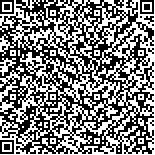王中莉,曾明,金敏敏,等.不同侧别的重复经颅磁刺激对脑卒中吞咽障碍患者吞咽功能及其脑干听觉诱发电位的影响[J].中华物理医学与康复杂志,2023,45(7):620-627
扫码阅读全文

|
| 不同侧别的重复经颅磁刺激对脑卒中吞咽障碍患者吞咽功能及其脑干听觉诱发电位的影响 |
|
| |
| DOI:10.3760/cma.j.issn.0254-1424.2023.07.008 |
| 中文关键词: 重复经颅磁刺激 脑卒中 吞咽障碍 脑干听觉诱发电位 |
| 英文关键词: Transcranial magnetic stimulation Stroke Dysphagia Brain-stem Auditory evoked potential |
| 基金项目:浙江省公益研究计划社会发展项目(LGF21H170003);浙江省医药卫生科技临床研究应用项目(2022KY383);浙江省医药卫生科技临床研究应用项目(2022KY378) |
|
| 摘要点击次数: 3432 |
| 全文下载次数: 4310 |
| 中文摘要: |
| 目的 观察不同侧别重复经颅磁刺激(rTMS)对脑卒中后吞咽障碍患者的吞咽功能及其脑干听觉诱发电位(BAEP)的影响。 方法 选取脑卒中吞咽障碍患者83例,采用动态随机法将其分为患侧刺激组22例、健侧刺激组21例、双侧刺激组20例和对照组20例。4组患者均行常规吞咽功能训练,患侧刺激组、健侧刺激组和双侧刺激组在此基础上给予频率3.0 Hz的rTMS治疗,患侧刺激组进行病灶侧刺激,健侧刺激组进行非病灶侧刺激,双侧刺激组进行左、右交替的rTMS刺激。对照组则在常规吞咽功能训练的基础上给予假rTMS治疗。4组患者的刺激治疗时间均为每日治疗1次,每次治疗20 min,每周治疗6 d,连续治疗5周。分别于治疗前和治疗5周后(治疗后),在吞咽造影检查(VFSS)的基础上,依据VFSS视频和临床评估对4组患者进行吞咽障碍结局和严重程度量表(DOSS)评估,同时采用吞咽障碍造影评分量表(VDS)对4组患者口腔期和咽期的吞咽功能进行评定,并采用BAEP检测其脑干传导通路情况。 结果 治疗后,4组患者的DOSS评级均优于组内治疗前(P<0.05),且健侧刺激组和双侧刺激组治疗后的DOSS评级均显著优于对照组和患侧刺激组治疗后,组间差异均有统计学意义(P<0.05)。治疗后,4组患者的VDS各子项评分和总分均明显低于组内治疗前(P<0.05),双侧刺激组治疗后的各子项评分和总分均显著低于对照组治疗后(P<0.05),患侧刺激组在咽期吞咽启动、喉上抬和咽期通过时间的评分均显著低于对照组治疗后(P<0.05),健侧刺激组治疗后的吞咽失用、食团后漏、口腔运送时间、咽期吞咽启动、会厌谷残留、喉上抬、咽喉壁残留、咽期通过时间评分和VDS评分总分均明显低于对照组治疗后(P<0.05)。治疗后,4组患者的Ⅰ波、Ⅲ波、Ⅴ波的潜伏期和Ⅰ波~Ⅲ波、Ⅲ波~Ⅴ波、Ⅰ波~Ⅴ波的峰间的潜伏期均低于组内治疗前(P<0.05)。对照组治疗后的Ⅰ波、Ⅲ波、Ⅴ波的潜伏期和Ⅰ波~Ⅲ波、Ⅲ波~Ⅴ波、Ⅰ波~Ⅴ波的波峰间的潜伏期与双侧刺激组和健康组治疗后比较,差异均有统计学意义(P<0.05)。双侧刺激组治疗后的Ⅰ波、Ⅲ波、Ⅴ波潜伏期和Ⅰ波~Ⅲ波、Ⅲ波~Ⅴ波、Ⅰ波~Ⅴ波的波峰间的潜伏期均明显短于患侧刺激组(P<0.05)。双侧刺激组治疗后Ⅴ波的潜伏期为(6.53±0.73)ms,与健侧刺激组比较,差异有统计学意义(P<0.05)。 结论 双侧3.0 Hz的rTMS刺激联合常规吞咽训练不仅可以显著改善脑卒中后吞咽障碍患者的吞咽功能,还可缩短其BAEP的潜伏期。 |
| 英文摘要: |
| Objective To observe any effects of contralateral repeated transcranial magnetic stimulation (rTMS) of the swallowing motor cortex on the swallowing and brainstem auditory evoked potentials (BAEPs) of stroke survivors with dysphagia. Methods A total of 83 stroke survivors with dysphagia were randomly divided into an ipsilesional stimulation group (n=22), a contralesional stimulation group (n=21), a bilateral stimulation group (n=20), and a control group (n=20). In addition to their conventional dysphagia training, those in the three stimulation groups received 3Hz rTMS while the control group was given fake stimulation. The treatment was administered daily for 20 minutes, 6 days a week, for 5 consecutive weeks. Before and after the treatment, swallowing function was assessed videofluoroscopically and using the Dysphagia Outcome and Severity Scale (DOSS). The oral and pharyngeal stages of swallowing were evaluated using the videofluoroscopic dysphagia scale (VDS). Brain stem conduction was assessed using BAEPs. Results After treatment the average DOSS scores of all 4 groups were significantly better than before the treatment. The average DOSS scores of the contralesional and bilateral sti-mulation groups were then significantly better than those of the other two groups. The sub-item and total VDS scores of all 4 groups had decreased significantly, but the average score of the bilateral stimulation group was significantly lower than the control group′s average. Ipsilesional stimulation significantly improved the VDS sub-item scores for the triggering of pharyngeal swallowing, laryngeal elevation, and pharyngeal transit time compared with the control group. In the contralesional stimulation group the average total score and the VDS sub-item scores for apraxia, premature bolus loss, oral transit times, the triggering of pharyngeal swallowing, vallecular residue, laryngeal elevation, coating on the pharyngeal wall, and pharyngeal transit time were significantly lower than those of the control group, on average. After the treatment the latencies of BAEP waves I, III and V and the I-III, III-V and I-V interpeak intervals had decreased significantly in all four groups, but the average latencies and intervals of the bilateral and contralesional groups were significantly shorter than those of the control group. The latencies and intervals of the bilateral stimulation group were then significantly shorter than those in the ipsilesional stimulation group on average. The average latency of wave V in the bilateral stimulation group (6.53±0.73ms) was significantly shorter than that in the contralesional stimulation group after the treatment. Conclusion Bilateral rTMS over the swallowing motor cortex combined with conventional dysphagia training can significantly improve the swallowing of dysphagic stroke survivors. |
|
查看全文
查看/发表评论 下载PDF阅读器 |
| 关闭 |
|
|
|